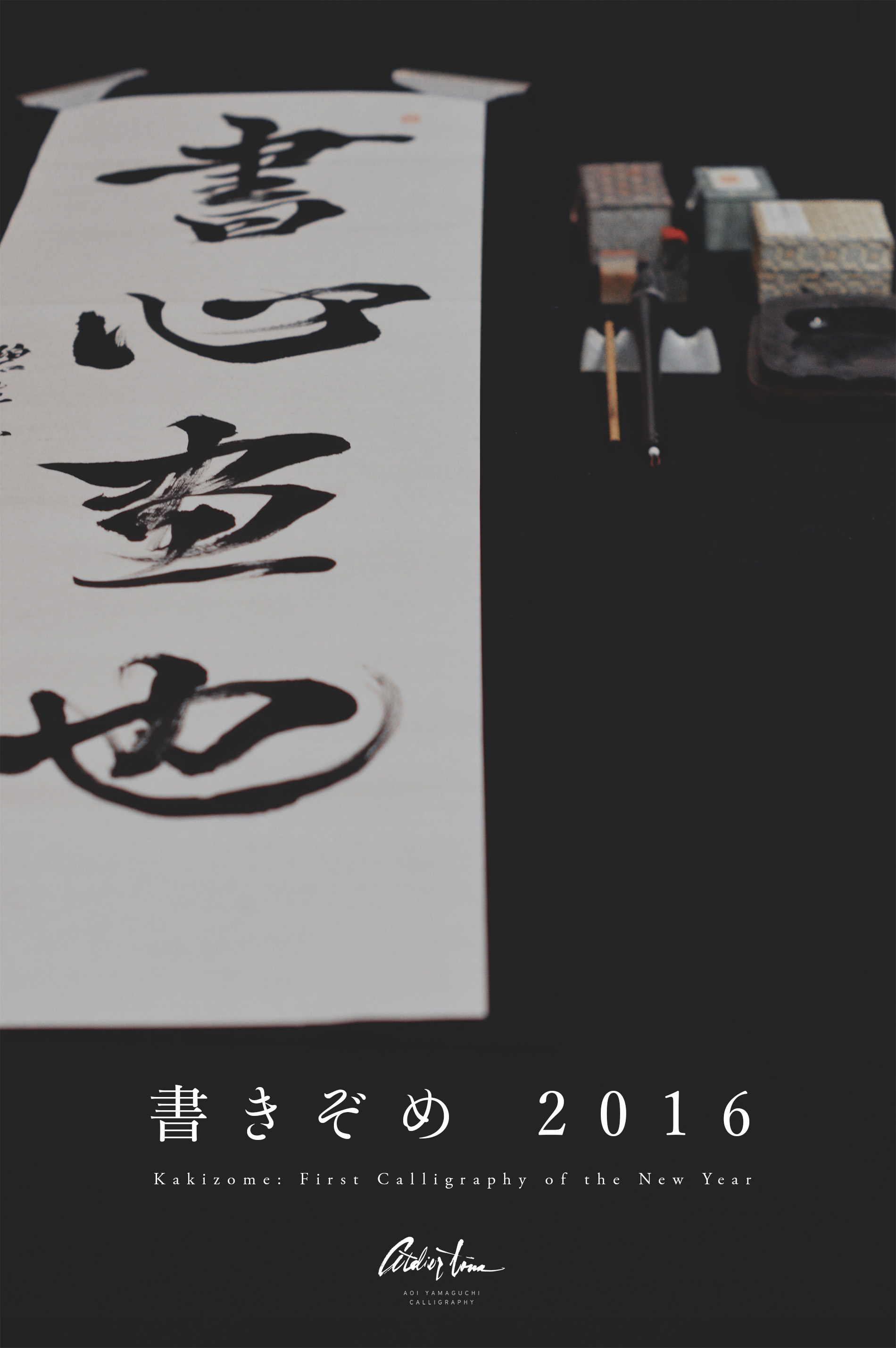Kakizome (書き初め) is the term for the first calligraphy writing of the new year, traditionally performed on the second day of January. This event is also called 吉書 (kissho), 初硯 (hatsu-suzuri) and 試筆 (shi-hitsu). People write auspicious words or a short Japanese or Chinese poetry, such as haiku or tanka, something that symbolizes one’s wishes for the New Year. In modern times, people simply prefer to choose kanji characters that have positive meanings and one’s resolution for the year.
Traditionally, Kakizome is written with fresh water taken from the well in the morning of the New Year’s Day, which is called 若水 (Wakamizu), as this water is believed to be holy. Ink grinding gives you meditative moment to reflect your thoughts and wishes for the new beginning of the year. From ancient times in Oriental countries, calligraphy has been defined as “書は人なり” (sho wa hito nari = “calligraphy is the person”), and “書、心画也” (書、心の画なり: sho, kokoro no e nari = “calligraphy, a painting of your heart), meaning that our handwriting reflects one’s personality: emotions, discipline, sophistication and inner spirit. Kakizome is a perfect challenge for one to embody your wishes in handwritten words; prepare the ink, focus in the moment, pick up the brush and write the steady strokes without hesitating in a smooth, continuous flow.
The history of Kakizome goes back to more than 500 years ago. Kakizome was originally a ceremonial event in the Imperial Court. Before the Edo period (1603 – 1868), education was only accessible to children of samurai and ruling families, so as calligraphy. In the beginning of 17th century, terakoya, private educational institutions originally founded in Buddhist temples, began to teach mainly reading and writing to children of middle class and commoners, and has widely spread in cities such as Edo and Osaka during the Edo period, remarkably in 1830s. In Meiji Period, the government instituted public school system to provide basic education for the entire nation (called 学制 Gakusei, instituted in 1872), and calligraphy classes became mandatory as part of the public education curriculum. Since then, Kakizome has spread among commoners and became a popular event for the New Years.
In Japan, Kakizome is usually burned at a Sagicho festival on the 14th or 15th of January. If your burned paper flies high, it is believed to be implying that your writing skill will improve.
Here at my studio, Atelier Towa, I will be hosting Kakizome workshops on January 9th and 10th!
Details are on the link below:
Looking forward to enjoying New Year calligraphy with you!


